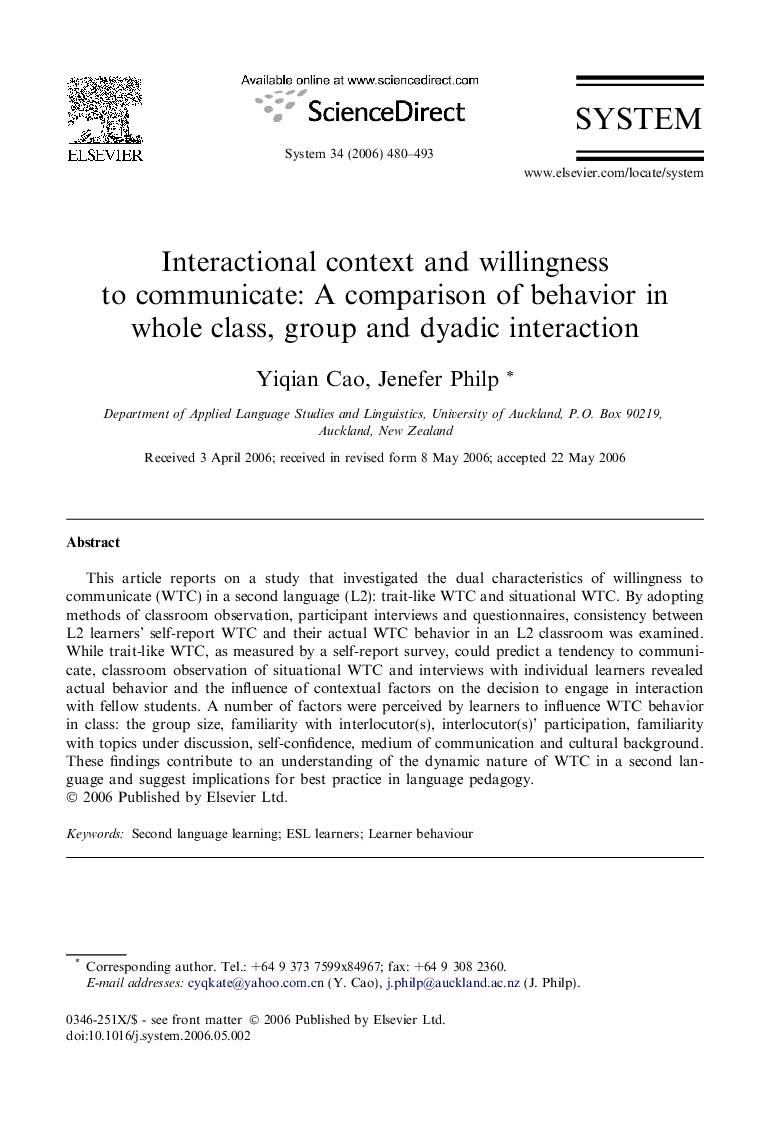| Article ID | Journal | Published Year | Pages | File Type |
|---|---|---|---|---|
| 373836 | System | 2006 | 14 Pages |
This article reports on a study that investigated the dual characteristics of willingness to communicate (WTC) in a second language (L2): trait-like WTC and situational WTC. By adopting methods of classroom observation, participant interviews and questionnaires, consistency between L2 learners’ self-report WTC and their actual WTC behavior in an L2 classroom was examined. While trait-like WTC, as measured by a self-report survey, could predict a tendency to communicate, classroom observation of situational WTC and interviews with individual learners revealed actual behavior and the influence of contextual factors on the decision to engage in interaction with fellow students. A number of factors were perceived by learners to influence WTC behavior in class: the group size, familiarity with interlocutor(s), interlocutor(s)’ participation, familiarity with topics under discussion, self-confidence, medium of communication and cultural background. These findings contribute to an understanding of the dynamic nature of WTC in a second language and suggest implications for best practice in language pedagogy.
